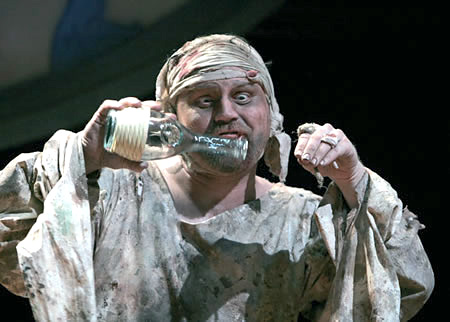How has your study of Shakespeare expanded your understanding of human nature?
When discovering that one of my literature units this semester would be based upon the works of William Shakespeare, I have to admit, I was not thrilled. Throughout my high school years, like many others, a selection of Shakespeare’s works were incorporated into our curriculum and from the beginning I haven’t been his biggest fan. However, through analysing his works in depth and delving into his ‘genius’ mind one is able to recognise his talent in manipulating language’s features to express his ideas. Once you get past the difficulty of his language (which many people tend to give up on) and his ideas become clear, one is able to realise his portrayal of not only the world that surrounds him but alternate worlds as well. In particular, his characterisation, is what I have found so interesting and seems to be the signature feature of his writing. Through his characters the audience is able to recognise and explore the complexities of human nature and as a result, are forced to respond. Shakespeare’s characterisation, particularly in his works of ‘Romeo and Juliet’, ‘The Tempest’ and ‘King Lear’, is what enables his ideas to be communicated as they all embody an individualistic quality that represents an aspect of society.
Studying Shakespeare has expanded my understanding of human nature and what it means to be human. Human nature is a complex concept to define, as humans themselves are complex. However, Shakespeare is able to simplify all its layers within his characters to symbolise how all components can either work for or against each other. In the case of ‘Romeo and Juliet’ Shakespeare is able to simplify the notion of love to something that has the ability to conquer anything and everything. He recognises that it is human nature to fight for something that is so precious and rare, however comes with sacrifice, but that sacrifice is worth taking. Through Romeo and Juliet the audience are educated on how love can make us become irrational and naive and yet it is something that we can not see whilst in it. Shakespeare recognises that it is human nature to sometimes be blinded by love (maybe not to the extent of having to kill ourselves), but it is a power that has the ability to make us completely inferior.
Shakespeare’s writing has increased my understanding of human nature and how it plays a part in the world. Each of his character’s are driven by human nature, however represent a different aspect or perspective on it. Whilst some embody love and nurture others are driven by hate and the yearning to conquer. As a result the audience is able to recognise that human nature can not be defined by one individual, in fact, all individuals mould what they believe to be human nature to suit their desires and values. Therefore one is always able to justify their actions by saying ‘It’s just human nature’.

Images:
http://www.azquotes.com/quote/383191

